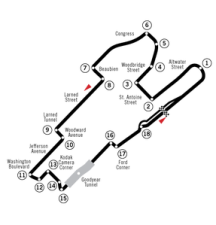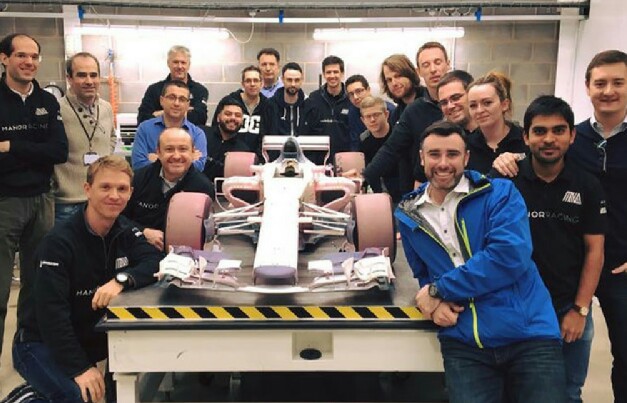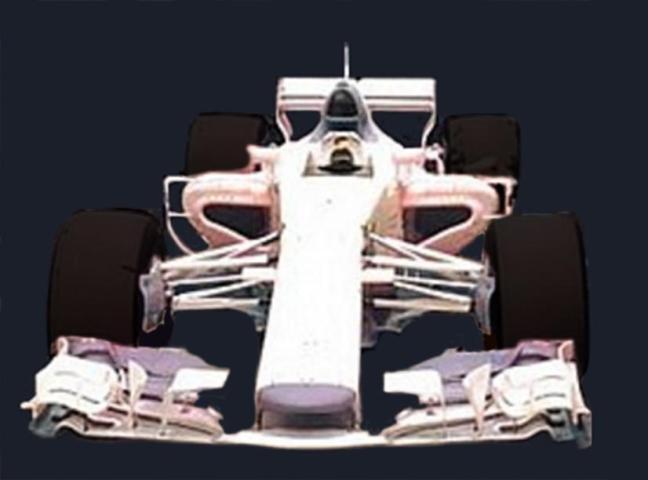https://www.motorsportweek.com/news/id/13143?id=13143
.jpg)
It’s human nature that it’s the final showdown we remember. The big finish. The crescendo that remains ringing in our ears as we walk away.
But often – in F1 at least – it was the one before that contained the grander shift. Not only of the mathematics but also of the mood. But readily it gets forgotten about. Think of Kimi Raikkonen’s stunning late seizing of the title in 2007 in Interlagos; Lewis Hamilton’s mysterious delay and all. Yet it was actually the round before in China that did more for Kimi. As I said it’s human nature – as one with experience in market research I’m well aware of what the trade calls ‘recency effects’.
Perhaps reflecting the same thing when a few years back the sport made its most recent fatuous attempt to ‘ban’ team orders they seemed to conclude laterally that orders in the final round were actually OK, as if it had some kind of stand-alone status. Plenty mused that actually all rounds count towards your points total…
And so it is too with the astonishing title showdown of 1986 in Adelaide that we’re almost exactly 30 years on from. That in which three drivers had a chance, and after a gripping and corkscrew-plotted finale the least likely of them sneaked through to snatch the championship – Alain Prost so doing between the two warring Williams-Honda pilots of Nigel Mansell and Nelson Piquet.
Even now some say it’s the last time the F1 world crown was won in other than the best machinery. Whatever the achievement was magnificent, and likely even Prost’s greatest glory of all.
He [Prost] remained in title contention, because he unfailingly got the maximum from his car, because his racecraft was without equal – Nigel Roebuck
No doubt with the 30th anniversary there will be plenty of retrospectives, and indeed Motor Sport magazine just named this one as the finest F1 race ever. But in Nigel Roebuck’s article outlining what happened that day he reminded us of the round that preceded it too, the Mexican Grand Prix. It was at least as important, not least for the eventual champion Prost.
The TAG engine in the back of his McLaren did not provide close to the power of the Honda that the Williams drivers could count on. “He [Prost] remained in title contention” said legendary scribe Roebuck, “because he unfailingly got the maximum from his car, because his racecraft was without equal”. And the penultimate round of the season in Mexico was, as Roebuck said, a “brilliant drive” from The Professor. One in which that famous racecraft was seen at its finest.
It also was more typical Alain than in Australia a fortnight later. In Adelaide Prost recovered with sheer abandon from a deflated tyre delay, and by his own admission he eschewed most of his usual cerebral ways, given it was win or bust. He even ignored his fuel gauge – and judging this was in normal circumstances Alain’s trump card – as had that been accurate his McLaren would have conked out before the end. He rolled the dice needing a six, and got it. In Mexico though – with an ethereal touch allied to brain power that outdid them all – the drive was pure Prost.
Prost accepted that clawing back 11 on Nigel with just 18 left available wasn’t realistic. Alain went so far as to congratulate Nigel on his championship.
And as with most great drives Prost had plenty to overcome in this one. Entering it there seemed little doubt who would walk off with the title. The afore-mentioned Mansell had triumphed in crushing fashion in the previous round in Portugal, and that seemed that. Prost even, while not conceding his crown, accepted that clawing back 11 on Nigel with just 18 left available – and in effect the gap was even wider as then only your best 11 scores of 16 counted – wasn’t realistic. Alain in the race’s aftermath went so far as to congratulate Nigel on his championship.
With this he needed to get something back on Mansell in Mexico. He did, and moreover he did it having driven much of the race a cylinder down…
The ’11 best’ rule again confused matters but someone worked out that all Mansell needed was fourth place in Mexico to make the thing sure. Prost’s McLaren-TAG as outlined wasn’t in the class of the Williams-Honda at the best of times, and here at exasperating mile-and-a-half altitude these were conditions that would play to the strengths of the grunty Japanese unit. While in addition to Mansell’s pomp as underlined in Portugal his team mate Piquet was having a late year resurgence of his own, having won three from four prior to Portugal. Ayrton Senna too while now out of title contention was still expected to be in the mix for the race win and of course would relent not a bit.
Compounding the matter McLaren’s Porsche engineers had trouble getting the revised turbos brought for these peculiar Mexican conditions programmed into the car’s engine management system. The upshot for Prost was severe engine lag, less boost that he’d have liked and just sixth place on the starting grid.
Prost needed to get something back on Mansell in Mexico. He did, and moreover he did it having driven much of the race a cylinder down…
As we were reminded 12 months ago a Mexican round parachuting onto the calendar was not at all like the usual new-fangled host. Not least because it has considerable F1 previous.
In 1986 the Mexico race, as was the case last season indeed, was returning after a spell away, and returning then as now to the track in Mexico City’s Magdalena Mixhuca parkland. Then as now too while the layout had been tweaked the resemblance to before was clear (though then unlike now the mighty and mighty treacherous Peraltada curve remained in all of its glory).
Like then too the main shift had been off the track. Many with longer memories returned in 1986 with some trepidation, as the previous round there in 1970 was run literally “lined with human guardrails”, as that year’s Autocourse put it. Some 200,000 turned up and most decided to get a better view by breaking down the safety fences and settling next to the edge of the track, with literally nothing between them and the cars. It was sheer merciful deliverance that unimaginable carnage and death among those watching on didn’t happen.
It wasn’t repeated 16 years on though, in part down to the presence of double rows of high barbed wire-topped fences and guards with vicious-looking dogs patrolling between them. Also though part of the explanation was that the crowd was only around a quarter the size of before, with ticket prices set far beyond many local wallets.
F1 at this point in history was more generally though experiencing an awakening. The sport was beginning to really establish itself as a Bernie-inspired TV extravaganza with a mass following, and adding to it Mansell that season was – after six years in the sport – becoming an overnight sensation with his title run. As we were to find out the everyman ‘Our Nige’ established popularity in his homeland never touched before or since most probably.
Expecting a world title confirmation the British press decamped to Mexico in large numbers. This step into the unknown perhaps explains why the Mexican pre-weekend press gathering with Mansell was arranged to take place in, erm, an airport café…
And expecting a world title confirmation and with it the first British crown in ten years, as outlined in Maurice Hamilton’s book Chequered Conflict the British press decamped to Mexico in large numbers (albeit beaten likely by those witnessed routinely today). This step into the unknown perhaps explains why, in these days before a strict schedule of official pressers, the Mexican pre-weekend press gathering with Mansell was arranged to take place in, erm, an airport café. The other side of the passport and security checks…
Underlining just how things have changed too Autosport boasted of the “extensive coverage” the BBC would give the race on British TV, which amounted to showing the first ten minutes of the race as well as the final 30 minutes live. And, oh yeah, a short race report would be on Radio 2 that evening.
‘The past is a foreign country, they do things differently there’, as goes the opening line of The Go-Between.
Whatever, Alain hardly was mentioned while all this was going on. He still wasn’t when we discovered something else that would in time became numbingly familiar. That drama – and of the scarcely credible kind – seemed somehow to follow Mansell around. Nigel as many visitors do in Mexico picked up some ‘Montezuma’s Revenge’ prior to the race; apparently on the Friday evening from a dinner celebrating the birthday of long-serving commentator Murray Walker… But still it seemed even with his obvious discomfort it wouldn’t halt him where it mattered, particularly as he qualified a solid third behind habitual pole man Senna and Piquet alongside.
But the opening ten seconds of the race did a lot to halt Nigel. Or rather, not get him moving from the halt. When the green light was shown Mansell’s FW11 didn’t move and cars flashed by on all sides, before Nige eventually got up and running, 18th at the end of the first tour. Mansell said simply that first gear wouldn’t go in. Some suggested uncharitably that he’d simply neglected to remember to put it in.
Any thoughts that those behind could chase Berger down on their fresh rubber were dashed, as instead they then put on an extraordinary show of tyre abuse. This clearly was a battle for survival.
All might not have been lost though as Mansell passed eight cars in 10 laps, but then we got a portent of the chief discriminator of the day. On the track’s abrasive surface and in intense heat Mansell’s charge had taken its toll on his tyres, and he came in for new wheels, losing him several of the places he’d gained. He only made one more halt after that, but it ensured that his goose was cooked.
It took a while for this to manifest at the front though. For a time the hardly-friendly Brazilian pair Piquet and Senna disputed the lead, with Prost and the apparently interloper presence of Gerhard Berger in his Benetton employing a watching brief. It stayed that way until nearly half distance when it was assumed all would make routine solitary tyre stops.
Prost, Piquet and Senna did peel in, but the shape of the day started to change. As Berger did not. He was on Pirelli rubber rather than the Goodyears the rest used, and the Italian product was noted for its durability and allowing non-stop runs (another case of the past being a foreign country you might say). That’s exactly what Gerhard was doing, and did. And any thoughts that he would wilt under the pressure of an impending freshman F1 victory both for him and his team were not at all borne out, as he proceeded as if on rails to win.
While any thoughts that those behind could chase him down on their newer rubber were dashed about as emphatically, as instead they then put on an extraordinary show of tyre abuse. Piquet needed two more changes indeed; Senna another one and could perhaps have done with another as his final set blistered badly. This clearly was a battle for survival.
If there is any driver in F1 history you’d pick to drive to save your life, particularly in such circumstances, Alain would be near or at the top of your list. He continued to ghost along as it all kicked off around him.
And not least for Prost, but for different reasons. He didn’t stop again but in some part necessity was the mother of invention, as with his TAG unit lapsed onto five cylinders rather than the full six as mentioned he dared not pit again, lest his machine not fire up afterwards. But if there is any driver in F1 history you’d pick to drive to save your life, particularly in such circumstances, Alain would be near or at the top of your list. He continued to ghost along as it all kicked off around him, and got home second for six points, near enough half a minute before Senna.
Berger’s win was spoken of as a surprise, but it really shouldn’t have been. As Motor Sport magazine put it, “Anyone who has been watching the F1 scene closely will have been aware that the Benetton-BMW team and Gerhard Berger have been heading for victory…The Benetton team’s pole positions at Osterreichring and Monza had demonstrated there was not much wrong with the car, the engine and the Pirelli tyres as far as high speed circuits were concerned, and the fast Mexican track seemed to suit them.”
Indeed, a few rounds before, Berger was winning in Austria at a canter before a flat battery severely delayed him. The non-stopping tactic shouldn’t have surprised either as it was something tried and done by Pirelli runners frequently, and indeed Berger was well on course to do just that in the Austrian race. But perhaps the discussion served to take more attention away from what Prost had done in Mexico.
In Mexico Alain drove a truly incredible race – Ron Dennis
The Williams meanwhile, the class of the field, toured in an ignominious, and lapped, fourth and fifth with Piquet ahead. It might have been even worse but for late retirements in front of them. The title conclusion therefore went down under, which is where we came in.
As Jeff Hutchinson’s Autosport race report from Mexico concluded of the continuing title fight, “Mansell is still the firm favourite”. And Adelaide we know about, his exploding Goodyear, Piquet then pitting as a precaution, and Prost picking up the pieces for an unlikely race and championship triumph. But as outlined it wasn’t all about that. Something about us extraordinary had got us there in the first place.
But not everyone lost sight of the contribution of Prost’s drive two weeks prior. “In Mexico Alain drove a truly incredible race,” said his boss Ron Dennis. “We’ve always had a lot less power than the Williams-Hondas, but this time – to make it worse – he was on five cylinders for half the race and didn’t dare to make a second tyre stop, for fear of losing the engine. On a very abrasive track he had to make two sets last the whole race: Mansell needed three, and Piquet four. Alain finished ahead of both of them…”
People will say Nigel lost it because of his tyre failure, but you could also say he lost it in Mexico. He could have clinched the title that day, but instead he dropped four points to Prost – and he lost the title by two. To my mind, there’s no one near Alain – Jackie Stewart
And even amid the immediate post-race and championship hubbub in Adelaide the sage Jackie Stewart recognised the importance of what had happened in Mexico. “People will say Nigel lost it because of his tyre failure” he said, “but you could also say he lost it in Mexico, where he started in third gear, dropped to the back, then began blistering tyres and finished fifth. He could have clinched the title that day, but instead he dropped four points to Prost – and he lost the title by two. To my mind, there’s no one near Alain.
“These days, you don’t often see a guy win a GP in a slower car – but this guy’s won the championship in one!”


 Laurence Edmondson F1 Editor
Laurence Edmondson F1 Editor








